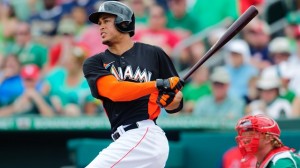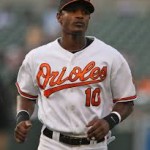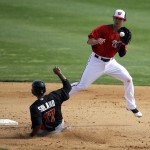(Standard disclaimer; this is ranting about my fake baseball team. If you don’t play fantasy, might as well skip this).
I’m really beginning to question my abilities in fantasy sports. Despite being deep into baseball and knowing random things off the top of my head that should be of use in fantasy (which managers are more inclined to do closer by committee, which ball parks are skewed offensively and thus players who play there may be at an advantage), I struggle year after year.
This year, thanks to an unfortunately timed meltdown (I lost a week 0-10-2 after having been ahead early in the week), I dropped just out of the playoff spots in my league (top 6 make the playoffs out of a 12 team league). But the ills of my team were seen early. Once again, I was plagued by under performing players and a poor draft that left me churning the waiver wire. By the end of the season I had made 58 of the 65 allotted moves in a failed attempt to improve enough to sneak into the playoffs (where honestly, I would have been a tough out; I can grind out 6-5-1 wins with the best of them).
So, what happened? Here’s a link to the post talking about my initially drafted team. And here’s a matrix of my 21 initially drafted players, their performance on the year and a note indicating whether or not they over- or under-achieved (bold means on the team at year’s end, red = badly under performed, green = greatly over-performed).
| Player | round Drafted/# Drafted overall | Yahoo o-rank 2013 | Yahoo O-rank 2014 | ADP at time of draft | 2014 Perf Rank |
| Adam Jones-OF | 1st round (#10 overall) | 7 | 13 | 10th/11.4 | 21 |
| Adrian Beltre-3B | 2nd round (#15) | 15 | 12 | 13th/13.2 | 46 |
| Alex Rios-OF | 3rd round (#34) | 25 | 44 | 34th/35 | 179 |
| Giancarlo Stanton-OF | 4th round (#39) | 222 | 26 | 24th/27.8 | 5 |
| Kenly Janssen-RP | 5th round (#58) | 52 | 48 | 49th/53.2 | 102 |
| Greg Holland-RP | 6th round (#63) | 36 | 63 | 62nd/62 | 60 |
| Mark Trumbo-1B/OF | 7th round (#82) | 66 | 78 | 53rd/56.0 | 944 |
| Carlos Santana-C/1B | 8th round (#87) | 134 | 87 | 69th/74.0 | 159 |
| Shelby Miller-SP | 9th round (#106) | 76 | 88 | 110th/113.0 | 485 |
| Hyung-Jin Ryu-SP | 10th round (#111) | 85 | 101 | 124th/127.2 | 95 |
| Aaron Hill-2B | 11th round (#130) | 402 | 111 | 124th/115.8 | 364 |
| Danny Salazar-SP | 12th round (#135) | 336 | 96 | 154th/150.4 | 355 |
| Tony Cingrani-SP | 13th round (#154) | 152 | 133 | 156th/156.8 | 941 |
| Jim Henderson-RP | 14th round (#159) | 130 | 155 | 170th/175.0 | 750 |
| Shane Victorino-OF | 15th round (#178) | 67 | 113 | 125th/129.0 | 1144 |
| Chris Archer-SP | 16th round (#183) | 175 | 171 | 208th/209.0 | 314 |
| Asdrubal Cabrera-SS | 17th round (#202) | 267 | 151 | 171st/177.4 | 177 |
| J.J. Hoover-RP | 18th round (#207) | 237 | 629 | 344th | 922 |
| Tim Hudson-SP | 19th round (#226) | 299 | 300 | 311th | 171 |
| Brandon Belt-1B | 20th round (#231) | 106 | 104 | 142th | 988 |
| Jake Odorizzi-SP | 21st round (#250) | 548 | 358 | 445th | 197 |
So, what happened?
My first two picks didn’t underperform “badly,” but were not the super stars you need to take hold of a league. I didn’t really like Adam Jones or Adrian Beltre at the draft, and despite some hot streaks they’ve been disappointments. Beltre got hurt in camp and missed games at the beginning of the season. My #3 pick Alex Rios I finally gave up on and waived; his seasonal rank of 179 belies what he’s done the last two months (closer to the 900 ranked range). It’s never a good sign when your #3 pick gets waived thanks to performance (and not injury) reasons.
Giancarlo Stanton is my one major “win” out of the draft; a 4th round pick who likely will finish in the top 5 of stats on the season. At the time of this writing, he was trailing only Mike Trout in terms of fantasy rankings for offensive players. He single-handedly carried my team offensively for weeks on end and is a large reason that my team offense was 1st in homers and 3rd in RBI. I feel vindicated here: I suffered through at least two injury-riddled Stanton seasons in the past after having drafted him highly, and he’ll have the same issue next year; he’ll likely be a top-5 pick with a huge injury risk on his head.
My two big-time closers did not disappoint: both Janssen and Holland performed as expected and led me to be 5th in team saves and have a 14-7-1 record in the category on the year. This is a big lesson learned for me; you can get by with just two big-time closers and be successful in this category. Of course, I wanted more closers but got unlucky; my #3 closer Jim Henderson suddenly and without warning was yanked from the role on opening day. Another team vultured his replacement (Francisco “K-rod” Rodriguez); all he’s done is pitch lights out all year and is 6th in the league in saves. That should have been my 3rd closer. That was a disappointment. I tried just one waiver-wire closer grab (Chad Qualls for Houston) and despite picking correctly, Qualls went weeks without save opportunities so I dumped him after two weeks looking for more starter quality.
Lets talk about the god-awful positional player issues I had in the draft: Mark Trumbo started out white-hot, fractured his foot and missed months. Aaron Hill did not come closer to living up to the hype of fantasy analysts. Shane Victorino was on and off the D/L all year. And poor Brandon Belt fractured his thumb, fought his way back and then got hit in the head during BP and still remains on the concussion D/L.
Of the Starting Pitchers I gambled on: Shelby Miller struggled all year, Danny Salazar got demoted, as did Tony Cingrani. Chris Archer did not produce at fantasy levels and Jake Odorizzi struggled early and was dropped (I eventually picked him back up). I only kept two drafted starters on the team all year (Ryu and Hudson) and frankly Hudson was so bad for so long that I came pretty close to dumping him. That basically means that my “wait on starters” strategy was a complete failure, if I’m only keeping ONE decent starter the whole year.
So, for the 2nd straight year I cycled the waiver wires. Here’s some of the guys I went through:
- Starters: Scheppers, Kluber, Eovaldi, Skaggs, Kennedy, Strohman, Peralta, Montero, Keuchel, Garcia, Beckett, Wood, Leake, Despaigne, Bauer, Liriano, Duffy, Hellickson, Cole, Smyly
- Relievers: Qualls
- Catchers: Mesoraco, Ruiz
- 1B: Francisco, Adams, Alonso, Singleton, Napoli, Carter, Duda
- 2B: Walker, Prado, Gennett, Wong
- SS: Aybar, Escobar, Baez, Betts
- 3B: Castellanos, Seager, Arenado
- OF: Rasmus, Parra, Stubbs, Crawford, Ozuna, Eaton, Reddick, Aoki
Scheppers I took a gamble on b/c his numbers were so good as a reliever; mistake. He got shelled opening day and soon was on the D/L. A number of these pitchers were decent moves and pitched well for a while (especially Josh Beckett and Marcus Strohman). The biggest failure here was dumping Corey Kluber after he got hit hard opening day: He’s turned into the 16th best fantasy performer all year, a 2nd round talent. That was a huge mistake. I liked Eovaldi‘s peripherals (lots of Ks) but he struggled with runners and his ERA/WHIP were inflated all year. Skaggs got hurt, Kennedy was ineffective. I got great value for a while out of Keuchel, but after a good mid-summer he tailed off badly. Garcia made like one start before returning to the D/L. Josh Beckett was a great waiver wire pickup for a while, but he too got hurt and remains on the D/L today. Alex Wood was a great find. I snaked Gerrit Cole off the D/L just before he came back on but he contributed little. Most of my other experiments were far too inconsistent week-to-week to trust (see Trevor Bauer, Despaigne, Mike Leake, etc).
As mentioned before, I only tried to gamble on one closer waiver wire pickup thanks to the solid two starters that I had from draft day. Most of the available closers on the waiver wire were in committee situations and couldn’t be trusted anyway.
I worked 1B, 2B, and 3B hard. At one point I was trying to engineer a 3B trade, having Seager while he was hot and Arenado after he came off the D/L. But my potential trade partners badly low-balled me for Beltre (offering guys who were worth far less than Beltre was) and suddenly Seager dropped off a cliff, making his trade value useless. Eventually I dumped both.
1B pickups Napoli, Duda and especially Carter turned out to be huge winners. Once again proving my point that some positions are just so deep they’re not worth drafting. Same with outfielders to a certain extent; I had Ozuna all year and he’s turned out to be well worth it.
My season’s end Fantasy team after all this waiver wire churning. Bold are original, red are waiver wire:
- C: Santana
- 1B: Carter, Duda
- 2B: Baez, Prado
- SS: Betts
- 3B: Beltre
- OF: Stanton, Jones, Ozuna
- SP: Hudson, Ryu, Odorizzi, Cole, Hellickson, Wood, Duffy, Liriano, Smyly
- RP: Jansen, Holland
That’s a lot of red.
Lessons Learned for Next Year
- You only need two big-time closers to compete. Spend draft picks in the 5th and 6th rounds, try to get a third closer later on and you’ll do fine. You must do a better job on the waiver wire though trying to grab closers if you want them.
- There’s always 1B talent on waivers. Do not over-spend on 1B.
- My strategy of over-loading on mediocre starters just doesn’t seem to be working. I was 3rd in wins and 5th in Ks, but 8th in ERA, dead last in losses and 11th in whip. Meanwhile the #1 team this year went with an uber-pitching strategy (over-drafting starters and ending up with Kershaw, Sale, Felix Hernandez as well as several top closers) and he just dominated pitching. Despite having a ton of starters, he managed to be 4th in Wins AND be 2nd in Whip. I think he’s got a good strategy. And i’m sure people will try to emulate it next year.
- Do not sweat churning and burning waiver wire picks early on; you may just end up with a monster surprise player on the year. This was the 1st place team’s strategy and it netted him Charlie Blackmon and a couple of extra closers. Two of the top 10 starters on the year were waiver wire guys: Corey Kluber and Garrett Richard.
- Do not hesitate grabbing big-name call-ups. I missed out on more than a couple guys that I would have grabbed but hesitated. This cost me last year with Yasiel Puig and it cost me this year with Jorge Soler and George Springer. I waited, and I missed out.
Blech. Hope you enjoyed the rant.




